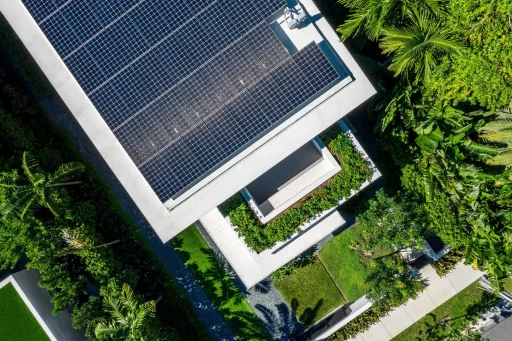If it is to help drive the energy transition and contribute effectively to decarbonising the economy, hydrogen still has some issues to address. These should be settled before long. Which means that producing green hydrogen at a competitive price will become a real possibility.
![]()
Could it be that the stars are aligning for hydrogen to become a key driver in the energy transition? Looking at a 5 to 10-year timeframe, the answer seems to be yes. Support from manufacturers, investors and public authorities suggests that the coming decade will be firmly focused on hydrogen-based solutions that offer cleaner mobility, manufacturing and energy storage options.
Hydrogen – or more specifically dihydrogen – is a gas that has been used for many years, particularly in the chemical industry for the production of ammonia and in the oil industry for refining.
“Hydrogen is set to reduce carbon emissions across all applications.”
While it doesn’t generate CO2 emissions on use, hydrogen is much less environmentally friendly during the production process. “Today, 96% of hydrogen used in the world is what is referred to as ‘grey’. That means that it comes from steam methane reforming, a process which involves splitting a methane molecule (CH4) into molecules of dihydrogen (H2) and carbon dioxide (CO2), a gas which contributes to the greenhouse effect and global warming,” explains Antoine de Broves, technique and innovation manager at Omexom (VINCI Energies).
As a result, achieving hydrogen from steam reforming is far from satisfactory from an environmental point of view.
The first requirement that needs to be met if this gas is to become a truly viable alternative – initially for the transport sector – is to produce “green” hydrogen. “This is generated by electrolysis, which consists of breaking down the water molecule into hydrogen and oxygen. When electricity, which is necessary for electrolysis, comes from decarbonised sources like solar or wind, then the hydrogen is said to be green, as it is produced without CO2 emissions,” notes de Broves.
Price competitiveness
However, producing 1kg of green hydrogen using industrial processes costs around €5, compared with only €1.5 for 1kg of grey hydrogen. This is a serious constraint at the moment. But not for much longer, says Vito-Edoardo Di Virgilio, eco-efficiency & innovation advisor at Actemium, the VINCI Energies industrial processes brand. “Electrolyser technology is improving all the time, making systems increasingly effective,” explains the expert. “Furthermore, the efficiency of an electrolyser significantly increases with system size, so scale also has an impact in terms of competitiveness. And finally the price of renewable energies is constantly falling, which will also help drive down the cost of the green hydrogen being produced.”
The latest Hydrogen Council report, entitled Path to Hydrogen Competitiveness: A Cost Perspective and published in January 2020, shows that by massively scaling up investment in the sector, the cost of hydrogen production, storage, distribution and consequently utilisation in a wide range of applications should decrease by 50% by 2030. This could make it economically viable for hydrogen to become an energy vector that contributes towards decarbonising our processes, which are currently heavily dependent on fossil fuels.
Commitment from public and private stakeholders
This positive trend has led over the past few years to an increasingly resolute commitment from investors, starting with European, national and local authorities. The European Commission in March 2020 launched the European Clean Hydrogen Alliance which brings together investors and governmental, institutional and industrial partners within the framework of a public-private partnership. “In France, the region of Normandy in 2016 introduced the EAS-HyMob programme which aims to roll out a network of 15 hydrogen refuelling stations, with 50% of the financing provided by the EU,” says Di Virgilio, stressing Actemium’s involvement in the project.
“This public-private effort should remove one of the obstacles to the development of hydrogen particularly as far as mobility is concerned – the lack of available infrastructure, in other words refuelling stations. We find ourselves at last in the situation we were in 10 years ago with electric vehicles,” points out Antoine de Broves.
What’s more, the climate emergency should result in an increase in CO2 taxes, which will strengthen the case for decarbonised solutions like those powered by hydrogen.
Local production
Two obstacles remain to be overcome: storing and transporting the hydrogen. Its low energy density by volume means that the gas must be compressed at very high pressure (350 to 700 bars). The compression process is itself energy-intensive, and transportation requires the use of thick-walled containers, making them heavy to transport and therefore involving a high energy cost.
“The solution might simply be to produce the hydrogen where it will be used. That’s what we’ll be doing in Rouen for example as part of the “Refuelling station of the future” project,” says de Broves.
Technological breakthroughs and initial, well-funded projects are continuing to unlock cost reductions across many hydrogen applications. According to the Hydrogen Council, in the next 5 years, the gas could become competitive in transportation, particularly for trains, trucks, coaches, taxis and ships, and in heating. Light-duty vehicle transportation and industrial heating applications are conceivable by 2030.
“Hydrogen has the potential to reduce carbon emissions across all applications,” adds Di Virgilio. “A solution in use today is to inject green hydrogen into the natural gas grid, which is known as Power-to-Gas1, in order to partially decarbonise methane combustion. The Jupiter 1000 demonstration project, developed four years ago by GRTgaz and involving Actemium, is seeking to achieve just that.”
1 P2G is the process of converting electricity into gas by turning water into hydrogen through electrolysis technology. The hydrogen then plays the role of energy vector, by being delivered to the gas grid, for example.
19/11/2020





